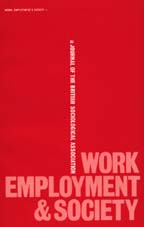Article contents
Lessons from America: Changes in the US Trade Union Movement
Published online by Cambridge University Press: 12 April 2001
Abstract
S. Aronowitz, From the Ashes of the Old: American Labor and America's Future, New York: Houghton Mifflin, 1998, $25.00, 246 pp.
K. Bronfenbrenner, S. Friedman, R. Hurd, R. Oswald and R. Seeber (eds.), Organizing To Win: New Research on Union Strategies, Ithaca: ILR Press, 1998, $19.95 xii+370 pp.
Jo-Ann Mort (ed.) Not Your Father's Union Movement: Inside the AFL-CIO, London: Verso, 1998, £13.00, paper xii+237 pp.
B. Nissen, (ed.) Unions and Workplace Regorganization, Detroit: Wayne State University Press, 1997, paper $22.95, 240 pp.
B. Nissen (ed.), Which Direction for Organized Labor? Essays on Organizing, Outreach, and Internal Transformations, Detroit: Wayne State University Press, 1999, paper, $28.95, 260 pp.
R. M. Tillman and M. S. Cummings (eds.) The Transformation of US Unions: Voices, Visions and Strategies from the Grassroots, 1999, Boulder: Rienner, 1998, paper $22.50 vi+296 pp.
For much of the postwar period, the American trade union movement provided a largely negative model of organisation and strategy to British trade union activists. The practice of business unionism ceded workplace control to employers; the unions were frequently anti-democratic, anti-communist and repressive of any internal dissent; and these latter policies were replicated in relations with trade unions internationally, where the American Federation of Labor-Congress of Industrial Organisations (AFL-CIO) was widely regarded as an extension of American foreign policy.
- Type
- Review Article
- Information
- Copyright
- 2001 BSA Publications Ltd
- 3
- Cited by




